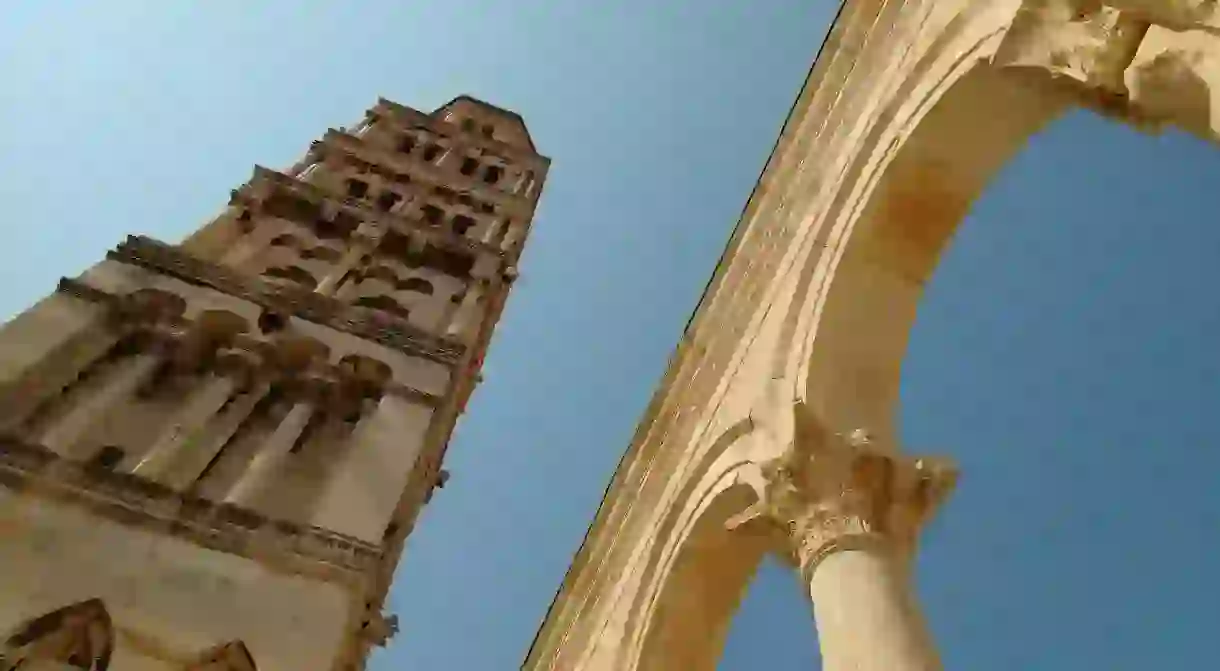The Most Impressive Buildings in Split, Croatia

From the time of Ancient Rome onwards, Split has proved an irresistible setting for emperors, mayors and sculptors to construct major edifices. An Adriatic location helps, as does proximity to a large supply of quality stone and marble on the island of Brač. The result is a city full of architectural treasures and reverence for the heritage they represent.

Cathedral of Saint Domnius
Cathedral

As your boat pulls into Split, the most notable landmark as you look over from the harbour to the historic centre is the bell tower of Saint Domnius. Built in a combination of Romanesque and Gothic styles reflecting its centuries-long construction after the 1200s, the tower owes its current look to a 1908 restoration. The Cathedral, created as the mausoleum for the Emperor Diocletian, is somewhat more conservative in style. Today’s visitor may climb the tower’s six storeys for a panoramic view of Split, the harbour and Adriatic beyond.
Croatian National Theatre in Split
Building
When mayor Gaj Bulat ordered the construction of the largest theatre in the region, he understood the prestige it would bring the city. He had Italian artist Eugenio Scomparini of the Venice Accademia design the interior, and Split architects Ante Bezić and Emil Vecchietti create a grandiose building that still dominates the square, later named after Bulat. After the theatre’s opening in 1893, Italian-language drama gave way to performances in Croatian. Name changes, from Split Municipal to Dalmatian National Theatre also reflected its increase in status. Today’s Croatian National Theatre stages some 300 productions a year.
Diocletian’s Palace
Building
Built in the early fourth century as a fortified retirement complex for a Roman emperor, Diocletian’s Palace remains a grandiose construction of white stone and marble transported from nearby Brač island. More a labyrinthine complex of courtyards and alleyways than a single building, Diocletian’s Palace is also the core of modern-day Split. Overlooking the Adriatic, it’s a constant bustle of activity. Many locals live and run many businesses within the palace and even around the grand central square known as the Peristil, with its pristine sphinx from 1,500BC.
Meštrović Gallery
Building, Park
Born in Slavonia, the great Croatian sculptor Ivan Meštrović learned his craft in Split. Three decades after his apprenticeship, this extraordinarily prolific artist returned to Split to build a family summerhouse overlooking the Adriatic. According to his design, the property was to be a villa, a studio and an exhibition space. Renovated in the late 1990s, the building is now the Meštrović Gallery, housing two floors of his works, including hundreds of paintings and architectural plans. Outside is a small sculpture park.
Poljud Stadium
Stadium
The Poljud is more than just the main football stadium in Split. Overlooking the Adriatic, it was created by architect Boris Magaš as a futuristic arena worthy of staging the Mediterranean Games of 1979. He and his team worked night and day to complete this masterwork, inspired by the outdoor theatres of Classical Greece and fashioned in the form of a seashell. Nearly 40 years after its construction, the Poljud remains an innovative and striking piece of stadium architecture. Magaš may not, however, have envisioned his creation being used for a three-day techno festival, Ultra Europe.













